Physical Address
304 North Cardinal St.
Dorchester Center, MA 02124
Only instrument the frontal recess with good reason and sound intention.
Functional drainage of the frontal sinus relies on preservation of the mucosa of the frontal recess.
If the mucosa of the frontal recess cannot be preserved, a Draf III procedure is usually indicated.
Maintain bony support around the frontal recess whenever possible.
Do not use stents.
Obliteration is avoided wherever possible, but if it is required, remove all mucosa and drill the cavity twice.
A common reason for failure of frontal sinus surgery is the complexity of the frontal recess and resulting surgical technical problems. There are many variations in the anatomy of the frontal recess. The normal frontal recess is narrow, raising the question as to the role of anatomic variations in the pathogenesis of rhinosinusitis. However, the frequency of such “variations” and anatomic “restrictions” appears to be no more prevalent in a control population than in a patient with proven rhinosinusitis.
In the setting of concurrent conditions, such as severe allergic rhinitis, frontal recess anatomy variations might predispose to secondary sinus dysfunction. However, it seems likely that for patients with diffuse and bilateral disease, the primary problem is the mucosal pathology or a patient's immunity, and this is the reason why one individual will develop chronic rhinosinusitis (CRS) and another will not. The etiology or nature of the frontal sinus disorder is essential, as the intent and purpose of any subsequent surgery are directed by it.
Traditionally, the uncinate process has been considered the “key” to the frontal sinus, with the superior attachment of the uncinate process determining the frontal drainage. However, Wormald pointed out that the anteroposterior distance from the skull base to the frontal beak is largely determined by the pneumatization of the agger nasi cell, the almost omnipresent anterior-most cell of the ethmoid labyrinth. Drainage pathways are, thus, defined by the combined structure of the uncinate process and the agger nasi. The boundaries of the frontal recess can be defined by the agger nasi front wall or nasofrontal beak anterior ( Fig. 46.1A to E ), and the medial wall of the frontal recess is formed by the middle turbinate and lateral lamella, whose height is determined by the level of the cribriform plate. The lateral wall of the frontal recess is formed by the medial orbital wall/lamina papyracea and/or the agger nasi air cells. Posterior to the frontal recess lies the ethmoid roof, and the anterior ethmoid artery runs across it. Often many frontoethmoidal and agger nasi cells are evident, and their size, number, and position vary. Posterior to the frontal sinus, an ethmoid cell development (termed a supraorbital ethmoid cell ) can be found in a minority of patients that extends across the roof of the orbit. When this variation occurs, the anterior ethmoid artery is often present on a mesentery in the ethmoid roof. Another variation is the intersinus septal cell that may extend into the crista galli and drain into the frontal recess, or may “displace” it laterally.
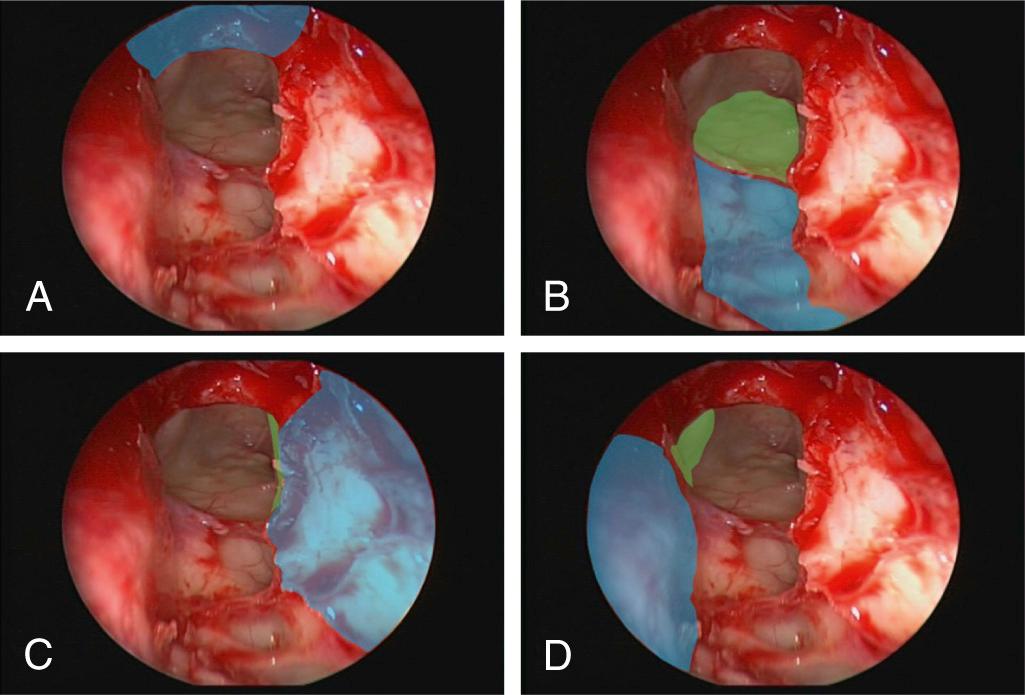
Extensive study of the computed tomography (CT) scan with identification of the agger nasi cell, superior limit of the uncinate process, and lamina papyracea, along with the determination of the height of the lateral lamella and the location of the anterior ethmoid artery, help prepare a roadmap for surgery ( Fig. 46.2 ). The “building block” approach, a way of mentally visualizing the frontal recess and surrounding individual cells in three dimensions, as introduced by Wormald, can be a useful teaching tool. In many conditions in which opacification of the frontal recess is complete, or extensive pathology is present, it can be much more difficult to visualize the bony outline of the air cells. Operating on a blocked or scarred frontal recess requires particular care to identify the anatomic boundaries, thickness of the frontal beak, position of the anterior ethmoid artery, and the height of the ethmoid roof to achieve a complete and safe dissection on the frontal recess.
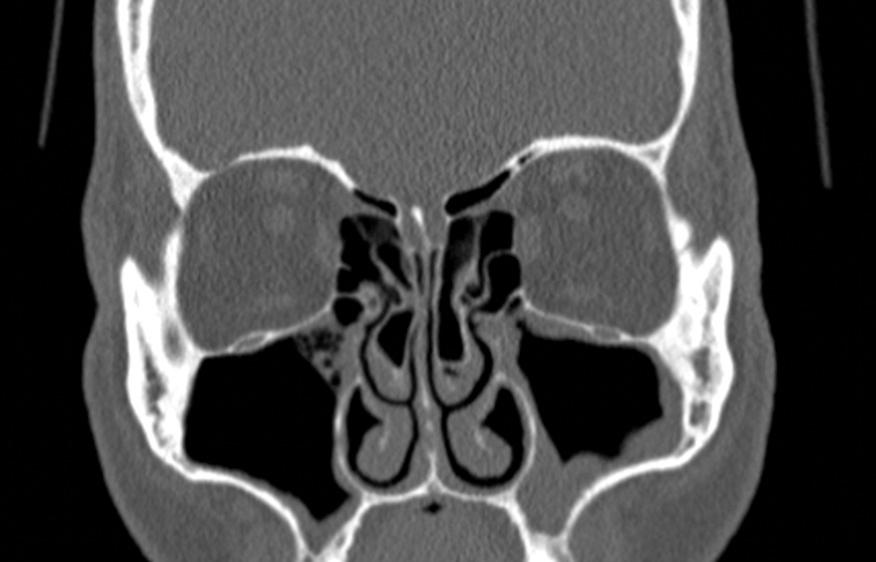
Acute bacterial frontal sinusitis is relatively uncommon, normally follows a viral upper respiratory tract infection, and is usually unilateral in presentation. Typically, patients with frontal rhinosinusitis come to medical attention with a low-grade fever, malaise, and a frontal headache often accompanied by marked tenderness of the medial aspect of the infraorbital margin. The infection usually responds to antibiotics with the correct antibacterial spectrum, which varies from area to area depending on the prevalence of resistance to amoxicillin. The most common organisms are Streptococcus pneumoniae, Hemophilus influenzae, anaerobic streptococci, Bacteroides species, Staphylococcus aureus and S. epidermidis, Streptococcus milleri, and microaerophilic streptococci. Culture-directed antibiotic coverage is desirable for severe infections or for the complications of acute sinusitis.
Occasionally, infection does not respond and needs to be drained. It is worth placing a topical decongestant endoscopically high in the middle meatus because this will sometimes allow for spontaneous drainage through the frontal recess. If this does not work, the options include opening the frontal sinus endoscopically by removing the anterior ethmoid air cells that surround the frontal recess while trying to preserve the mucosal lining of the recess or, if this technique is not practical, trephining the frontal recess through an incision in the medial aspect of the eyebrow. Usually, a mini-trephination is more than adequate to obtain a microbiologic sample and place an irrigation catheter or metal stud to allow for sinus washout. The infected mucosa is hyperemic, which makes bleeding and visibility a problem in some patients, particularly in young people. Damage to the mucosa of the frontal recess runs the risk of causing stenosis, so if drainage cannot readily be achieved endoscopically, trephining the frontal sinus may be an option, particularly because these are normally “one-off” infections. Surgical intervention in the setting of acute frontal sinusitis is rarely applied when culture-directed medical management is performed.
Frontal sinusitis can be complicated by periorbital cellulitis or formation of a periorbital abscess or subperiosteal abscess of the frontal bone (Pott puffy tumor, see below). For an orbital complication, the indications for an urgent CT are central signs, being unable to assess vision accurately, gross proptosis, ophthalmoplegia, deteriorating visual acuity or color vision, bilateral edema, no improvement or deterioration at 24 hours, or a swinging pyrexia that does not resolve within 36 hours. The presence of a relative afferent pupillary defect is an early examination finding of a compromised orbit and an important indicator to intervene.
Intracranial complications include a subdural empyema, intracerebral abscess, extradural (epidural) abscess, meningitis, and more rarely, cavernous and superior sagittal sinus thrombosis. It is important to be aware that in patients with intracranial complications, almost 50% come to medical attention with periorbital cellulitis or frontal swelling; therefore, it does not follow that because a collection of infection spreads around the orbit, it excludes any intracranial involvement. It is important to always look for the symptoms or signs of intracranial involvement, such as an altered mental state, headache, vomiting, seizure, neck stiffness, papilledema, unilateral weakness, or cranial nerve signs. If there is intracranial involvement, sinus surgery has a role in obtaining pus for culture. However, it is unclear whether drainage of the frontal sinus contributes to a favorable clinical course. Drainage of the abscess can be performed externally or endoscopically if the sinus is in continuity with the collection.
Pott puffy tumor is a subperiosteal abscess of the frontal bone associated with osteomyelitis and usually seen as a complication of frontal sinusitis or head trauma ( Fig. 46.3 ). It is a rare but serious complication, mostly seen in adolescents/young adults and sometimes children. Because of the high risk of intracranial complications, early diagnosis and adequate surgical and antibiotic treatment are mandatory. If patients are doing well clinically, it could be preferable to adopt an approach consisting of medical treatment and simple external drainage of the abscess with a drill hole or even puncture needle to prevent scarring of the acute inflamed frontal recess.
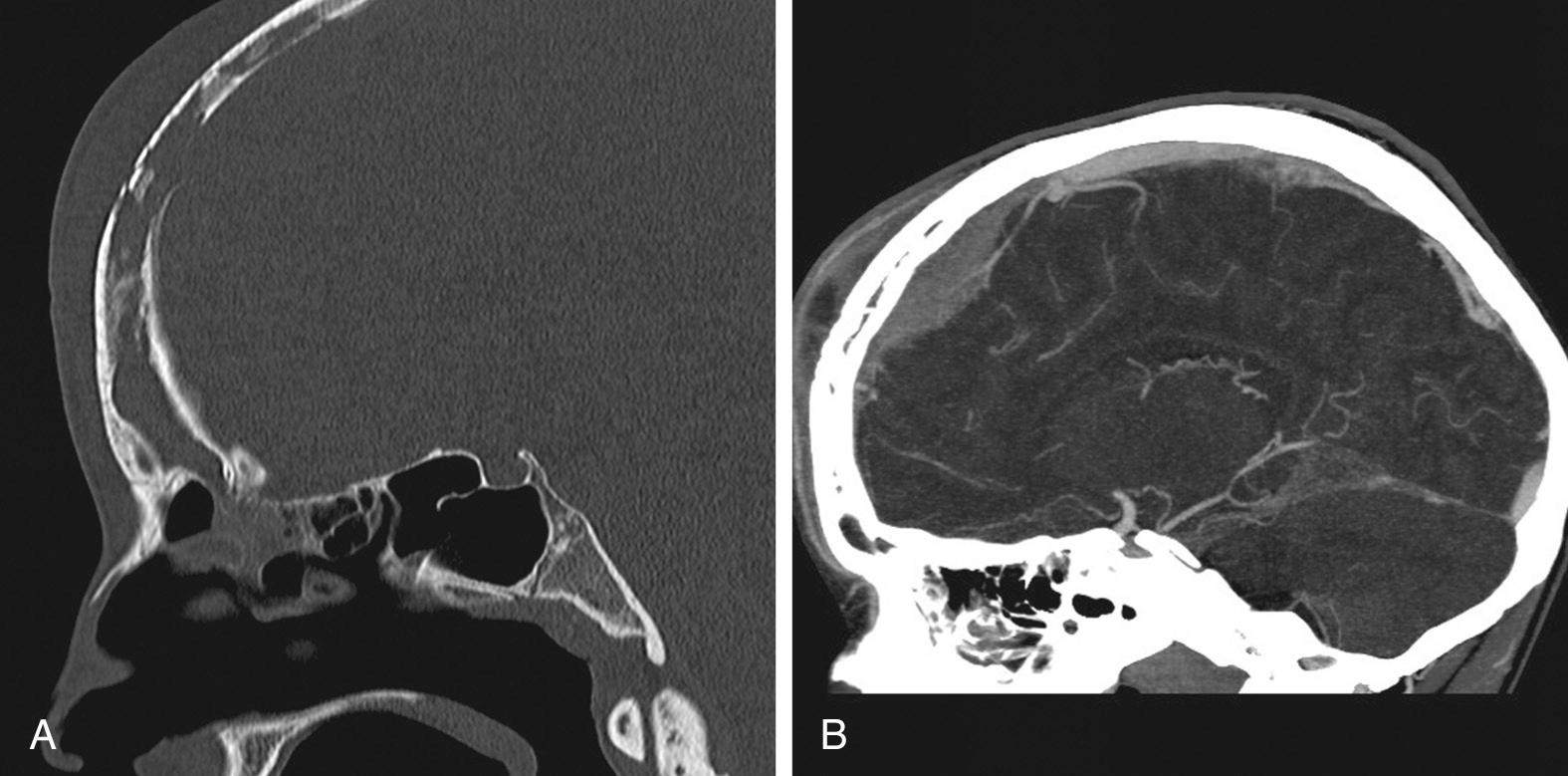
Before embarking on the specific management of chronic frontal sinus disease, it is worth considering the history of frontal sinus surgery. In the pre-endoscopic era, the principles of surgical treatment of the frontal sinus were very simplistic, with intervention applied after antibiotics failed and a decision was made about whether drainage of the frontal sinus could be maintained or not. Much of this strategy was based on drainage and/or removal of diseased mucosa. Fortunately, our understanding of chronic sinus disease has evolved, and ostial occlusion appears to be a limited etiologic factor.
The first report of frontal sinus surgery was by Vega, who removed an osteoma from the frontal sinus in 1586. Jurasz was the first surgeon to describe an intranasal approach to the frontal sinus. In the late 1880s, Ogston and later Luc described trephination and widening of the frontonasal duct through the anterior ethmoid sinuses. Brieger first described the osteoplastic operation in the 1890s, and Riedel described a technique in 1889 in which he removed the anterior and inferior walls of the frontal sinus. This resulted in a cosmetic deformity that required a second operation if an improvement in cosmesis was to be sought. In 1908, Knapp advocated an extensive ethmoidectomy through the medial orbital wall, leaving the anterior wall of frontal sinus intact, but removing the diseased mucosa and enlarging the frontonasal duct. In 1914, Lothrop resected the frontal floor between the frontal recesses and the intersinus septum, along with the upper aspect of nasal septum, after an ethmoidectomy via an external approach as described by Lynch. By 1921, Lynch and later Howarth entered the frontal sinus through an external approach, via the medial orbital wall; and like Knapp, they removed sinus mucosa and left a stent in position to try and maintain a patent duct. The osteoplastic flap with fat obliteration then became popular for the treatment of persistent frontal sinus disease. With the introduction of CT and endoscopes, it became possible to open the frontal recess to a greater or lesser extent, with mucosal preservation dependent on the extent of disease and the skill of the operator. These procedures are discussed below under Endoscopic Frontal Sinus Approaches.
The bacteriology of CRS differs from acute rhinosinusitis in that the prevalence of anaerobic organisms is higher. Typical infections include Streptococcus pneumoniae, Hemophilus influenzae, Moraxella catarrhalis, and, when there has been previous surgery, methicillin-resistant Staphylococcus aureus, Pseudomonas aeruginosa, and Enterobacter species.
In the medical treatment of bilateral chronic rhinosinusitis without purulent secretions, growing evidence suggests that some antibiotics work not only through their antibacterial action but by downregulating inflammation. Long-term (12 weeks to 6 months), low-dose erythromycin, clarithromycin, and other macrolides have been shown to be beneficial in some studies but not all. The efficiency with which an antibiotic disperses biofilms may also be of importance. Potentially, only non-eosinophilic subtypes of CRS might be appropriate for macrolide therapy.
There are many indications for surgeries, such as an initial management to the frontal sinus; (1) the presence of fungal disease in the frontal sinus, (2) barotrauma, (3) mucocele ( Figs. 46.4 to 46.6 ), (4) an osteoma causing obstruction with evidence of mucosal disease ( Fig. 46.7 ), (5) disfigurement or exophthalmos, or (6) other pathology, such as osteoneogenesis, osteomyelitis ( Fig. 46.8 ), and tumors ( Fig. 46.9 ).
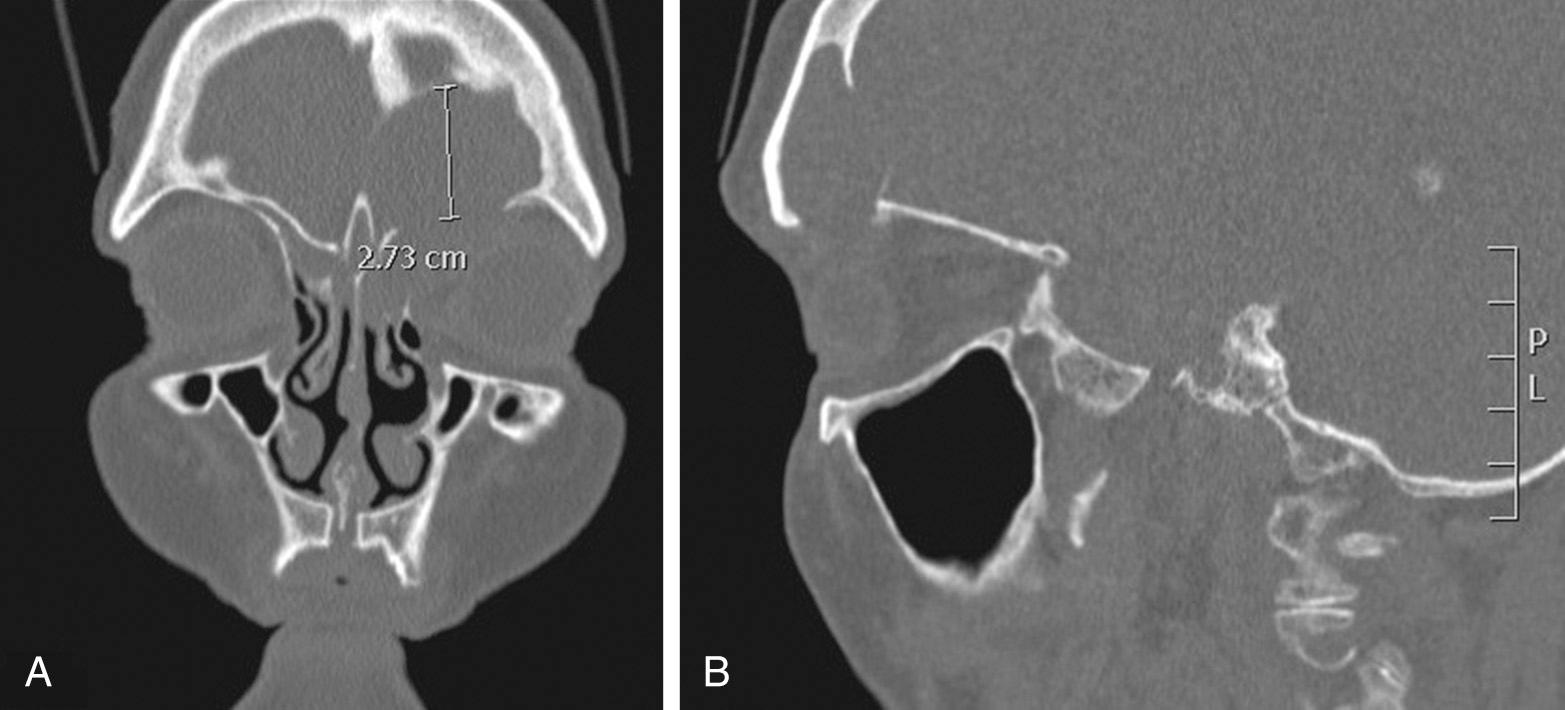
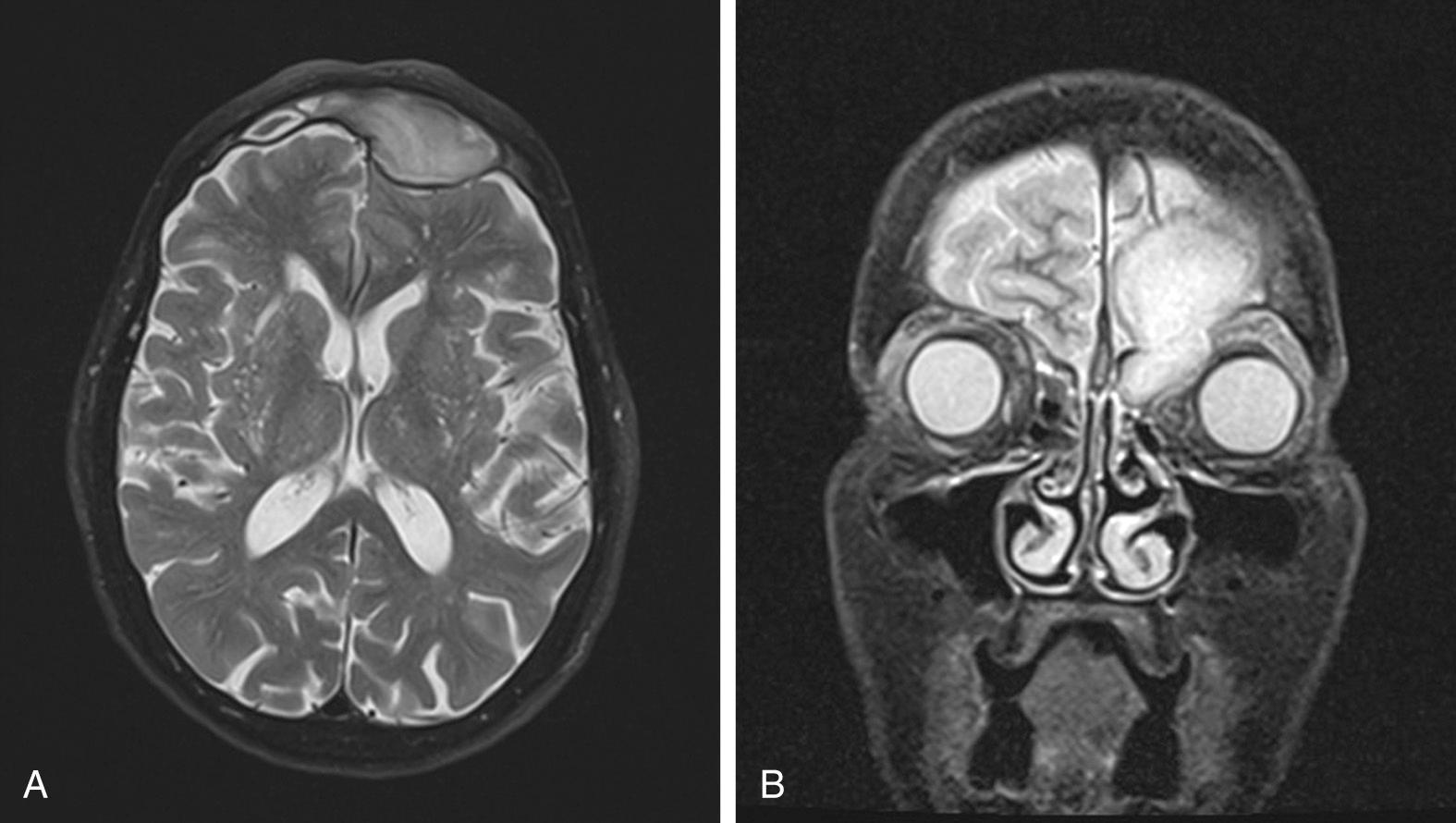
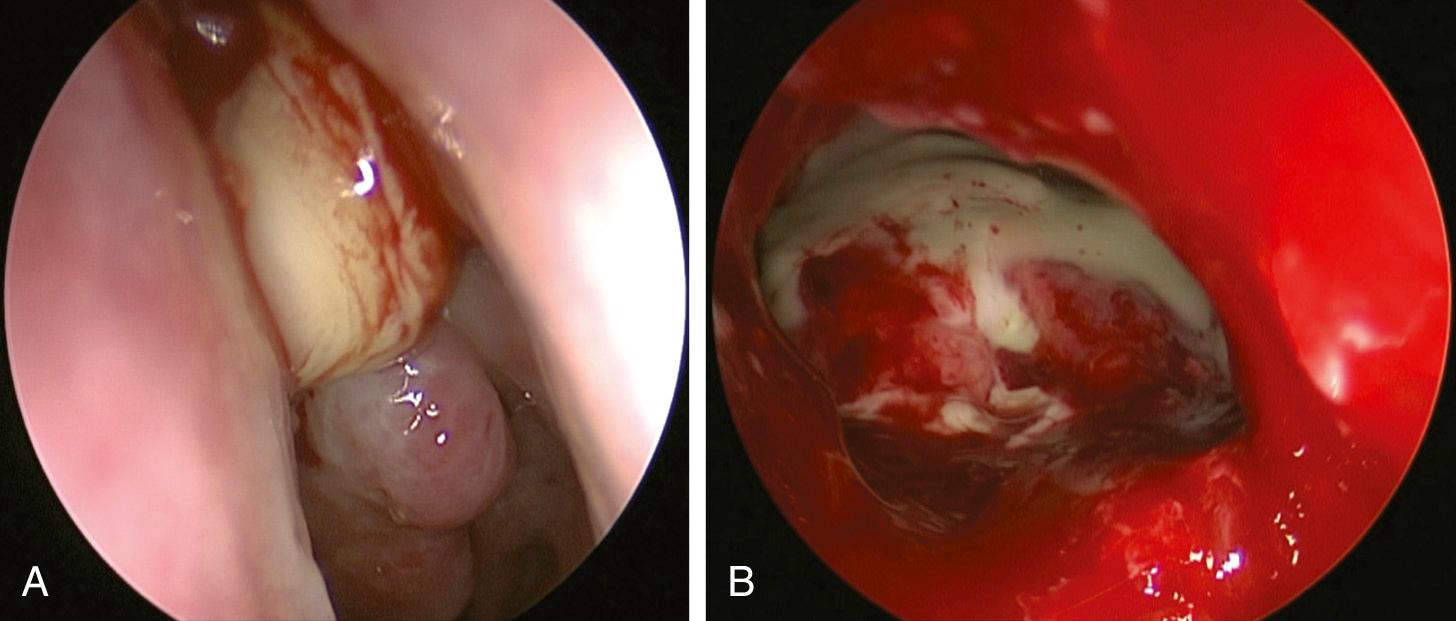
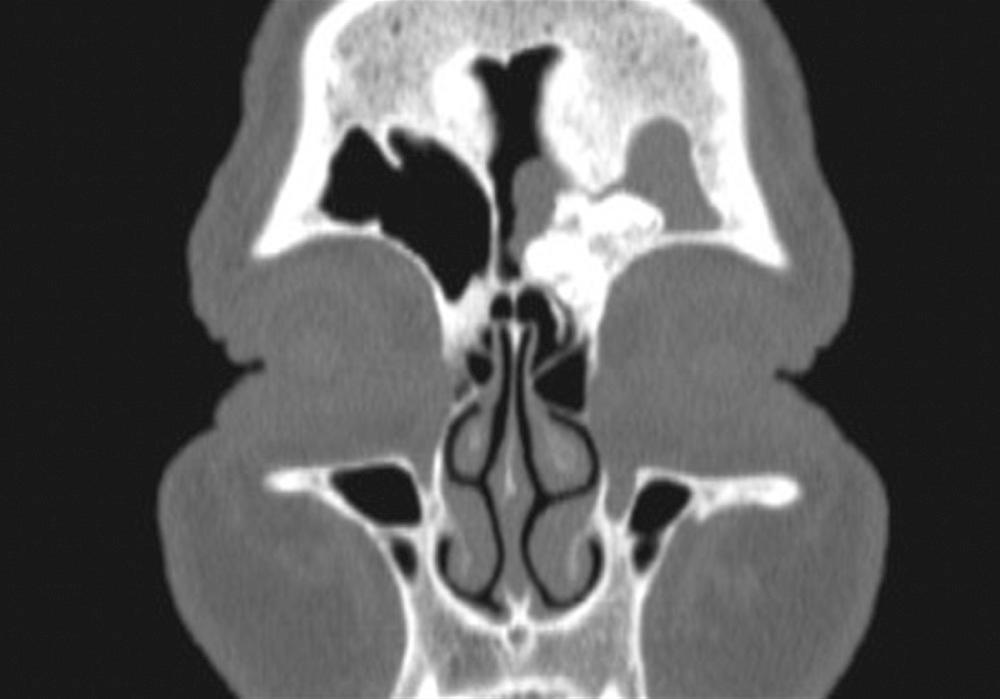
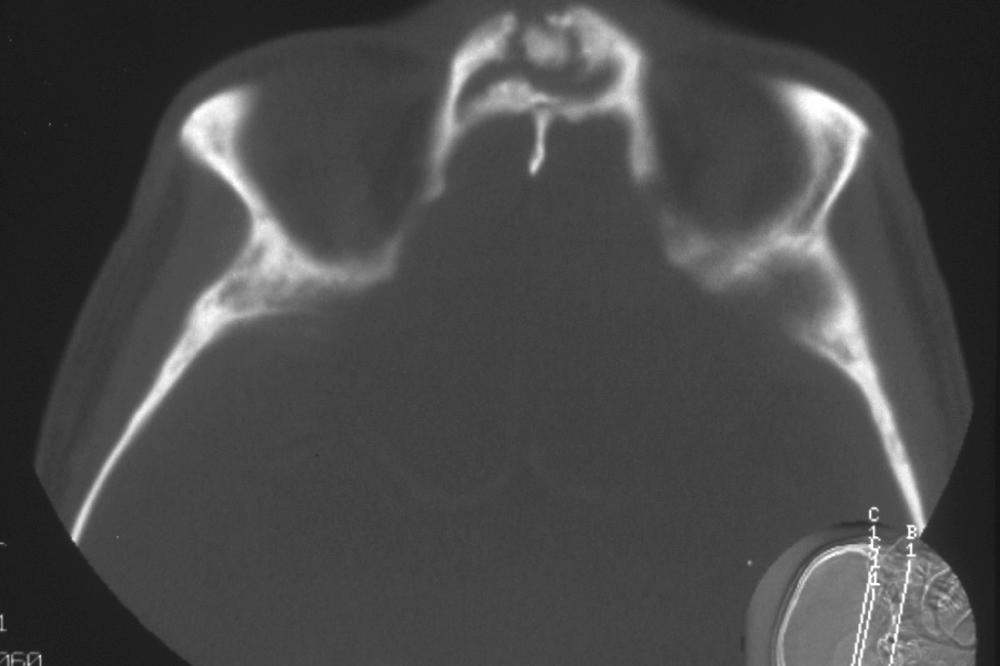
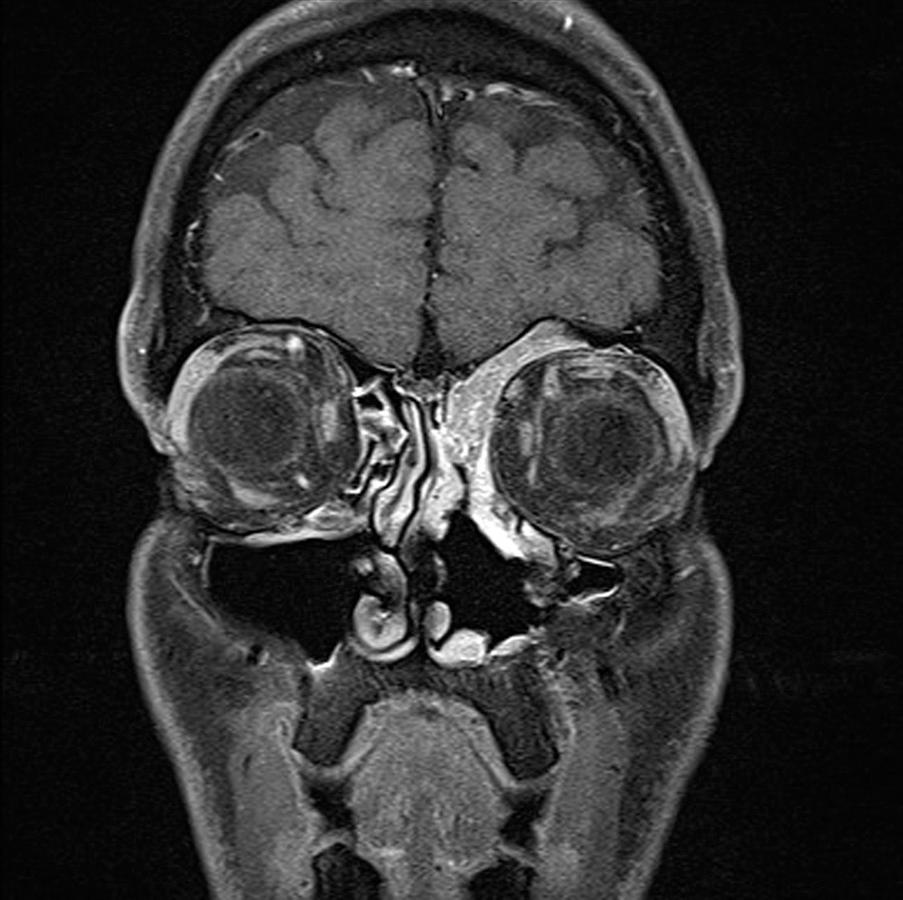
There are indications where limited surgery may be appropriate. In the setting of a maxillary fungal ball or odontogenic sinusitis, opacification of the frontal recess alone is not a reason to instrument it, because this is often due to retained secretions that will clear if the ostiomeatal complex is opened and the remaining disease treated medically.
Unfortunately, many patients with chronic frontal sinus disease appear to have had their disease initiated by unnecessary instrumentation of the frontal recess. In the setting of CRS, the rationale of surgery has shifted away from simple concepts of drainage or ventilation, as these factors have not been shown to be part of the primary pathoetiology. For many patients, the creation of a large frontal ostium or neo-ostium assists in the delivery of topical therapies, such as corticosteroid, and the removal of hypersecretory mucin is the main intent of surgery.
Become a Clinical Tree membership for Full access and enjoy Unlimited articles
If you are a member. Log in here